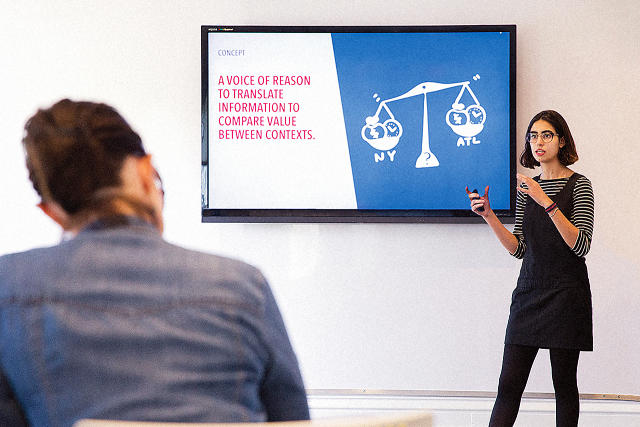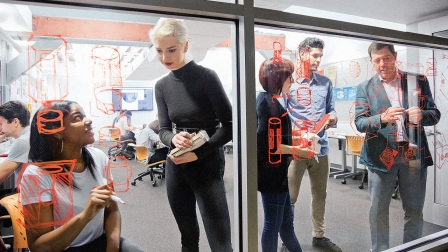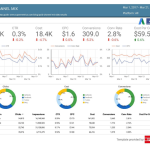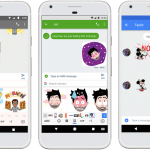Google Has A Solution For The UX Design Education Gap: Google
As a profession, “designer” is constantly evolving. Fifty years ago, chances are you’d either be a graphic designer, industrial designer, or furniture designer. In five decades, you might be an artificial organ designer, a cybernetic director, or fusionist, according to some futurecasting pros. But today, one of the most in-demand jobs is that of the user experience (UX) designer—a by-product of our increasingly digital world, where a strong user experience is essential to remain competitive.
One challenge for this relatively new job title? There hasn’t been a clear path toward acquiring the skills. Likewise, discovering employees with the right set of talents is difficult for employers. That’s according to Google, which along with the Savannah College of Art and Design (SCAD) has developed a BFA in User Experience Design, one of the first four-year undergraduate degrees to be offered in the field. The partnership came about naturally—as Google was familiar with SCAD’s diverse design course offerings—SCAD is willing to experiment with its approach, and both felt like there was “gap” in design education that needed to be filled.

A corporation taking a heavy hand in education raises some eyebrows with respect to potential conflicts of interest. Who’s profiting from the arrangement—the corporate sponsor, the university, or the students? Is receiving a degree with Google’s seal of approval the digital design equivalent of getting certified in entrepreneurship from Trump U or in burger chefing from Hamburger University?
Not quite (thankfully).
Mike Buzzard, a UX design manager at Google, is working closely with SCAD’s leadership and professors to develop the curriculum and argues that the rationale behind the course isn’t to turn SCAD into a feeder school. “Its teachings are more general to the UX profession at large,” he says. “We’re really trying to create a pipeline that’s larger than Google’s needs.”
Here’s how the tech giant and the design school are shaping the curriculum.

A Foundation In Fundamentals—And Research
While the new degree might be focused on an emerging type of design, Google and SCAD mined the existing course catalog to form the interdisciplinary curriculum. It includes foundational studies in drawing, color theory, and the basics of design. From there, students move to more advanced classes in typography, logic, art history. anthropology, math, programming, and information architecture, to name a few. Students learn the basics—but from many different fields.
Of the 34 required classes students must complete to earn the degree in UX design, five are brand-new courses developed by Google and SCAD: studios on research, ideation, prototyping, communication, and a sponsored collaboration.
The program aims to equip students with the foundation they need enter the UX design job market—whether their potential employer is Google or another entity. Google serves on the steering committee for the major and will continue to tweak the curriculum as it evolves. Though the Silicon Valley tech giant has lent its name and expertise to the program, it receives no financial kickbacks. Moreover, it costs the same for students as any other undergraduate field of study. (Total full-time tuition for one academic year is $35,190.)
Jason Fox, chair of the graphic design department at SCAD, has been leading the strategy from the university’s side of things, along with deans from the School of Digital Media, School of Design, and School of Communication Arts. To him, teaching scientific methods alongside more traditional creative pursuits is the strength of the program.
“When you think of teaching someone visual design, it’s about the aesthetics and the understanding of visual trends that compel people to act,” Fox says. “But in the digital world, the interactions become critically important. The immersive experiences that Google, Facebook, and Twitter are creating require anthropological understanding of how behavior informs decisions.”
To Buzzard, using research to guide and inform decision-making is essential for user experience design (UXD). For example, the most obvious problem might only be evidence of a much larger issue. “You can teach craft, but there’s a break between decorating and designing and we have to teach students about finding the primary problems and how to respond,” he says.
Students learn about human behavior, how to conduct user testing, and other research methods to sleuth user insights. The core of the behavioral research component of the program is rooted in anthropology and SCAD’s design methods focus on “rapid ethnography,” or learning as much as possible about a group or individual quickly.
While research is the foundation for UXD, interpreting that information and developing solutions using design fundamentals is critical to executing a product well. “It does not do any good to make decisions that defy the laws of physics,” Fox says.
Learning To Collaborate Across Industries
Another essential part of the program is making students comfortable with leaning on the expertise of others, since the complexity of digital problems often involves calling upon experts from different fields—programming, visual design, marketing, etc.—and synthesizing what they have to say.
“We want to teach the students confidence in collaboration,” Buzzard says.
James Simmons entered SCAD as a graphic design student, and though he liked the classes he was taking, he wasn’t sure if they had enough breadth. When he learned of the UX program, which was introduced in November 2015, he liked the multidisciplinary approach and switched majors. In addition to learning from professors in different departments, he also works with students who come from different backgrounds.
Recently, he worked on a group project that involved coding and visual design to make a better program. Seeing how everyone approached the problem and used the research to inform solutions was enlightening. “The most influential part of the team was that none of us were specifically designers or developers. We all had multiple hats,” he says.
Collaborating with other students is one half of the lesson; learning how to work within companies is another. To that end, Google is sponsoring a course in SCAD’s Collaborative Learning Center, an internship-like program in which outside companies—like BMW, HP, Microsoft, and Adobe—provide a problem as a case study for students to solve. This gives students insight into how companies think, and companies get a fresher perspective on what they’re tackling. (Depending on how you value “experience” and résumé building, this also treads into the murky area of young designers essentially giving away their work unpaid.)
While Google is still deciding upon the “problem” that it wants to solve during its fall CLC program, students can expect to have direct access to employees at the company.
“The major shift here, which is university-wide but the UX program really encapsulates, is [an emphasis on] industry partnerships,” Fox says. “It’s saying ‘I’m ready’ as opposed to saying, ‘I have a foundation, now teach me your process.’ Students in CLC-sponsored classes sometimes leave with texting-level relationships with people at companies. These are classes where you work with someone for 10 weeks, and it’s so immersive that you begin to know each other on a personal basis. That’s invaluable in this industry. Even if you don’t get a job [at the company who sponsored the CLC class], you might get recommended for another.”
A Mission Bigger Than One School
The UXD program was introduced in November 2015, and there are about 26 students currently enrolled, most of whom will be sophomores in the 2016-2017 school year. Google hopes that the framework that it set up serves as an open-source model that other universities can replicate or augment if they so desire. You can see the rubric of classes that compose the degree here.
“We’re trying to understand how we can open source something like this so other schools can figure out their own recipe and influence and provoke each other,” Buzzard says. Eventually he’d like to build up an alumni network that can bring the program to other universities. “We’d like to share what has worked, what hasn’t worked, and what the solid building blocks are. We don’t want to be overly prescriptive, but share what we believe to be essential.”
The UX designers of the future don’t necessarily need SCAD and Google to become great—just as any degree from any institution is never a golden ticket—but the road the two organizations are paving is one way to get there. The cachet of Google is big right now, but who knows what the future holds. If the program does what it intends—arming students with the foundation to become independent thinkers—they should be equipped to evolve along with the industry, even if Google is no longer the industry darling.
“Everything will change,” Simmons says, “and you need to learn the fundamentals to be comfortable with change.”
[All Photos: courtesy SCAD]
Fast Company , Read Full Story
(37)












